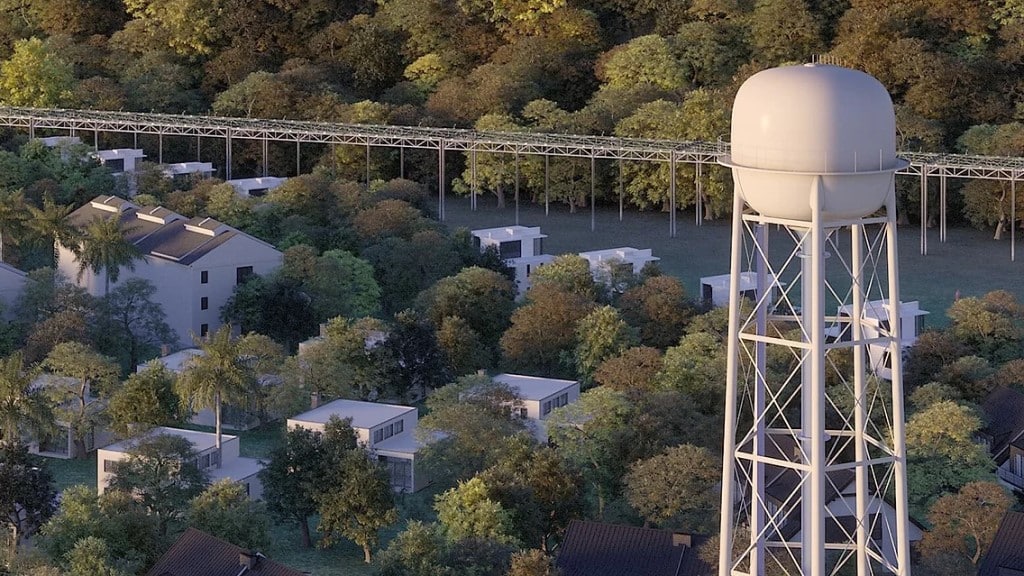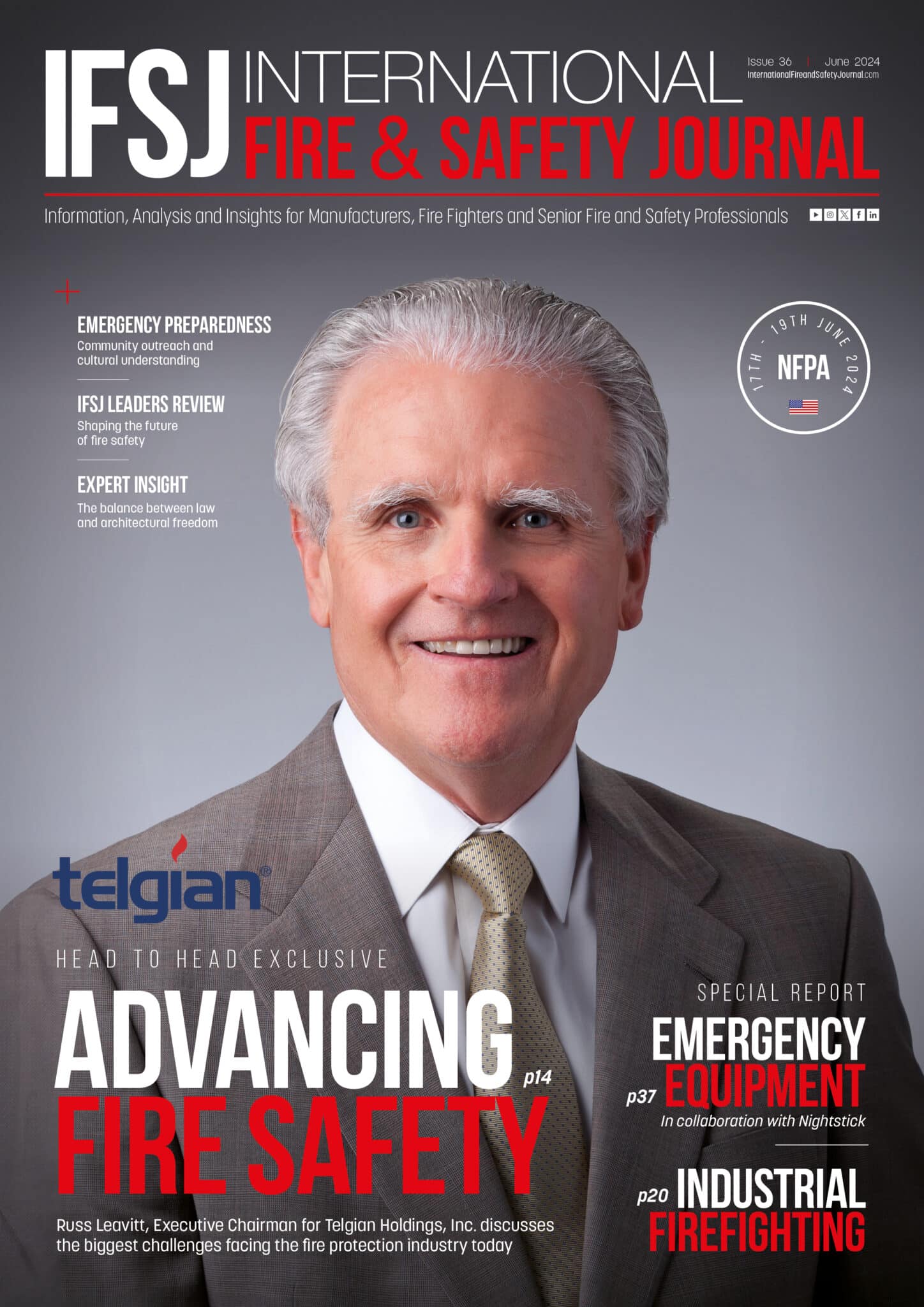Pioneering progress in wildfire control with Hydro Firebreak
- May 17, 2024
- 10:54 am


Iain Hoey
Share this content
Oswaldo Acosta, Project Manager and creator of Hydro Firebreak talks about the company’s plans to tackle the wildfire crisis
Can you tell us about your role at Hydro Firebreak and your involvement in developing this fire containment solution?
As the Project Manager and creator of the fire containment system at Hydro Firebreak, my primary focus has been on developing a solution that significantly impacts the way we approach wildfire protection.
Recognising the acute need for an effective fire defence mechanism globally, we were driven by the mission to save lives and safeguard properties against the devastating effects of forest fires.
My involvement has spanned from the initial concept design to overseeing the project’s execution, ensuring that our innovative system meets the high standards required for combating wildfires.
Our patented modular network of high-capacity nebulisers and sensors is a proof of our commitment to innovation and environmental preservation.
It’s designed to create a mist barrier that lowers the ambient temperature and halts the advance of fires, making it adaptable to various terrains and automatically activated in areas most vulnerable to wildfires.
As the designer, I’ve had the privilege of steering this project towards reality, working closely with a dedicated team to bring about a change in how we protect our forests and communities.
The system’s originality lies in its ability to offer extensive protection with minimal environmental impact, a feature that sets us apart in the market today.
Holding the patent for this utility model in Spain was a milestone in our journey, strengthening our position as pioneers in fire protection technology.
As we continue to refine and expand our system, my role encompasses strategic planning and coordination, ensuring we remain at the forefront of innovation and efficacy in forest fire prevention and control.
What stage are you at with the project?
At the current stage of the project, we’re focusing on the feasibility studies and calculations necessary for development.
We haven’t progressed to a physical prototype yet; instead, we’re utilising two pieces of software to aid our design process.
The first software, named Water Cat, and the second, Sap2000, are instrumental for our work.
They allow us to perform the hydraulic and structural calculations needed to ensure the viability and integrity of our system.
This approach is crucial for us to refine our designs and prepare for the next stages of creating a tangible prototype.
How does the modular design of the system enhance its effectiveness in different types of terrain?
The modular design of our system is crucial for its adaptability and effectiveness across various terrains.
At the outset of any project, we conduct thorough soil or area studies to tailor our design precisely to the specific needs of the terrain.
This adaptability is a cornerstone of our approach, ensuring that the system can be customised for each unique environment.
Moreover, our system is geometrically uniform, allowing us to create diverse shapes and configurations.
This flexibility means we can install the system in a way that best protects the area in question, regardless of its geographical challenges.
Through this design philosophy, we ensure that our system can offer optimal protection across a wide range of terrains, making it a versatile solution in the fight against forest fires.
Can you explain how the Automated Activation works and its importance in wildfire management?
The Automated Activation feature is a pivotal aspect of our system, operating on temperature sensors that detect heat levels indicative of a fire.
Upon detection, these sensors send a signal to the control centre, triggering the system to activate automatically.
This automation makes our system entirely self-sufficient and autonomous, designed to operate independently of the areas it’s protecting.
The system’s modularity enhances its adaptability.
Modules can be interconnected to extend coverage across larger areas as needed.
Naturally, expanding the system to cover more ground will require more water and a larger tank, but these adjustments are scalable based on the size and requirements of the protected area.
This malleability and automatic activation are crucial for immediate response in wildfire management, ensuring rapid deployment without human intervention, which is essential for the welfare and protection of both natural and residential areas prone to wildfires.
What are the key technological innovations in your system that set it apart from traditional fire containment methods?
The innovations at the heart of our system revolve around our unique approach to water distribution and monitoring.
I’ve designed specific couplings or key pieces that enable us to construct a hydraulic network using firefighting hose lines.
This innovation allows us to significantly reduce the costs associated with system implementation.
Our temperature sensors, which can operate via Wi-Fi or wired connections, are fundamental to our system’s operation.
These sensors transmit signals that initiate the system’s response to fire.
Additionally, we’ve integrated the capability to install thermal cameras.
These cameras play a crucial role in identifying the type and location of a fire, ensuring that the system can activate at a safe distance to effectively prevent and combat wildfires before they can spread.
The essence of our system is its preventative nature, aiming not just to fight fires, but to stop them before they can cause significant damage.
How does Hydro Firebreak ensure environmental sustainability while controlling wildfires?
In designing our system, environmental sustainability has been a key consideration.
Our system operates primarily with water, which inherently aligns with eco-friendly practices.
However, it also has the capability to work with foam or a dual application of both, depending on the specific requirements of the fire it’s combating.
For installation, we ensure that the area is completely clear to minimise environmental disruption.
Since water is the main element used to extinguish fires, our system is naturally compatible with ecosystem conservation efforts.
Any foam used is designed to be biodegradable, ensuring it doesn’t leave harmful residues or impact the environment negatively.
We’re committed to avoiding any substances that could be detrimental to the environment.
This approach underscores our commitment to fighting wildfires effectively but also to preserving the integrity of the ecosystems we operate within.
Our system is a testament to the possibility of combining effective wildfire management with stringent environmental sustainability standards.
What developments can we expect to see in wildfire containment technology from Hydro Firebreak?
As we look to the future of wildfire containment, it’s clear that the advancement of technology plays a critical role in the evolution of our system.
With each passing day, new technologies emerge, and at Hydro Firebreak, we feel a strong sense of duty and responsibility to incorporate these advancements to enhance our system’s capabilities.
Our main goal is to achieve even earlier detection of wildfires, which would be a significant leap forward in preventing ecological damage.
Incorporating cutting-edge technologies such as artificial intelligence (AI) and machine learning will be key to this endeavour.
By improving our system’s ability to detect fires at the earliest possible stage, we aim to offer a more rapid and effective response.
This early detection capability is crucial for minimising the impact of wildfires on the ecosystem and for providing a more sustainable and resilient approach to wildfire management.
We believe that our system will revolutionise the approach to combating wildfires by enabling early detection and intervention, which is at the core of our mission.
The versatility of our system allows it to protect a wide range of environments – from residential areas and airports to crops and other agricultural lands.
This adaptability is crucial for effectively safeguarding against the threat of wildfires.
Our system stands out for its environmental friendliness as well, and with a lifespan of 20 years upon installation, it represents a long-term investment in safety and environmental protection.
Though it requires maintenance, the benefits far outweigh the costs, particularly as the system becomes increasingly automated over time.
This ongoing automation ensures that our wildfire containment technology remains at the cutting edge, providing unmatched protection and peace of mind for various sectors affected by the threat of wildfires.

